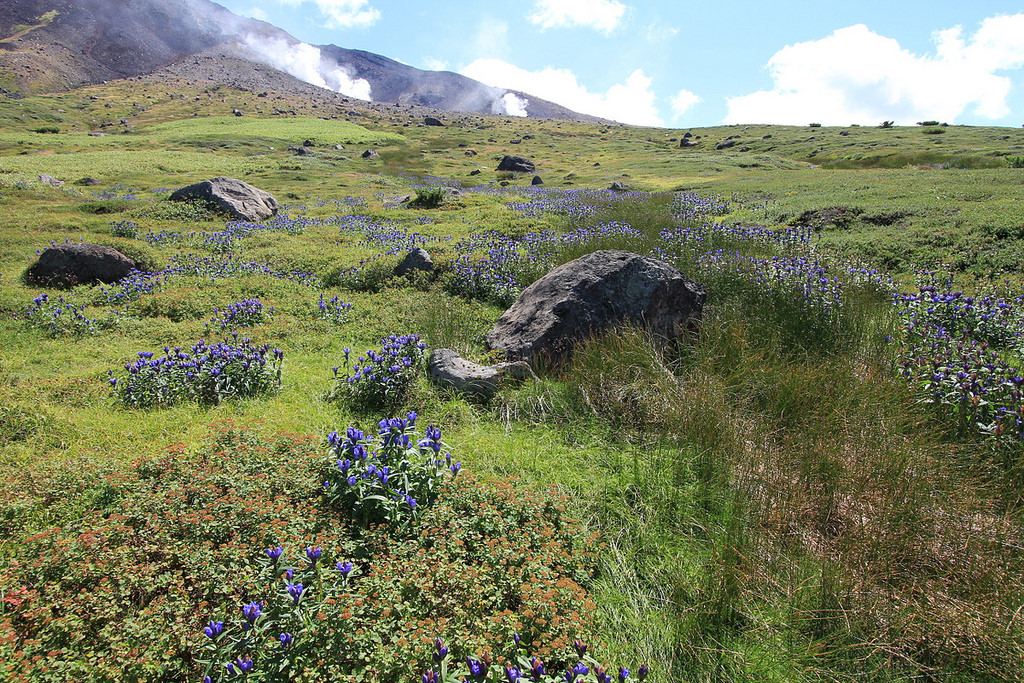
You might also like:
A WHILE ago I profiled Okinawa, Japan’s southernmost outpost with its beautiful beaches, tropical rainforests and fantastic diving locations. Though Japan’s southern outpost is home to what many consider to be the country’s last “unexplored” tracts, it has a northern counterpart in Hokkaido.
Hokkaido’s terrain and climate have been compared to those of Northern Europe, but the numerous hot springs and cherry blossoms are characteristically Japanese. For tourists, Hokkaido offers much that is completely different from the rest of Japan: cooler “humidity-free” summers and excellent winter sports facilities. With its numerous national parks, unique culture and history, what Hokkaido offers is something a world away from any other Asian destination.
Hokkaido’s eco-tourism highlights
Birdwatching opportunities abound in Hokkaido. Notable species include Red-crowned Crane, Yellow-breasted Bunting, Blakiston’s Fish Owl, Siberian Rubythroat and Latham’s Snipe. Onuma Pond has a birdhouse where one can witness tens of thousands of Bewick’s swans en route from Siberia in April and October, and binocular and telescopes can be used free of charge.
Lake Komuke-ko on the Okhotsk Sea is a migratory stop for 200 bird species.
Shiretoko National Park, a World Natural Heritage Site, is a great spot for eco-tours, bathing in hot waterfalls and nature and wildlife spotting (keep a lookout for bears).
Akan National Park is home to three volcanic mountain lakes and a mystical sapphire colored pond called Kaminoko, located in the middle of a forest. The park is a great place for hiking, canoeing and bathing in hot springs. There is also a traditional Ainu village with a museum.
Kushiro-shitsugen Marsh is Japan’s largest marsh (18,000 hectares) and home to the rare Red-crowned Crane.
Pic: Carolien Coenen/flickr
Daisetsuzan National Park is Japan’s largest national park and a hiking Mecca. The park is snow-covered until May, with patches remaining throughout the year. Hokkaido’s highest mountain, Asahi-dake, provides spectacular views.
Shikotsu-Tōya National Park – one of the countries most popular tourist spots, this park is dotted with lakes and active volcanoes, providing many hot springs. Highlights include green-covered Moss Canyon, Shōwashinzan mountain – which literally erupted out of a field in 1943 and now stands over 400 meters – and the beautiful volcanic lakes of Shikotsu and Toya.
Ainu culture can be experienced in the traditional village museums in Shiraoi Town or Sapporo Pirka Kotan, by visiting the authentic inhabited village of Ainu Kotan at Lake Akan-ko, and by attending one of several Ainu festivals throughout the year. Nopporo Forest Park contains the Historical Museum of Hokkaido, full of many opportunities to learn about the Ainu people and Nibutani Ainu Cultural Museum (Hiratori). Ainu culture is characterized by a close relationship with nature, as well as unique music, dance and religious practices.
Marimo, a freshwater green algae found in Lake Akan-ko, Kushiro District, looks like perfectly round green puffballs and has a traditionally spiritual significance for the Ainu.
Drift ice observation in the Okhotsk Sea – see the sights, hear the sounds, and perhaps even witness the unusual ecosystem that lives around the ice floats.

Hot springs in Hokkaido. Pic: Lazy Monkey/flickr
Hot springs, called onsens, are a popular pastime on Hokkaido. Though many are incorporated into resorts, guesthouses, some are still out in nature.
From Mother Nature Network:
Some bathing spots are outdoors and are not associated with any spa or inn. The classic forest-and-mountain landscapes of this nature-rich island make it a great choice for those seeking a scenic setting for their soak. Onsens are open year-round, and some people consider them most beautiful in the winter, when deep snows cover Hokkaido.
Several firms in Hokkaido offer guided eco-tours as well as trips to wineries, food-based tours, horseback riding, trekking, canoeing, rafting and slow food-themed agricultural tourism.
Other Hokkaido highlights include hiking on the northern islands of Rishiri-to Rebun-to (a national park), visiting flower gardens, and enjoying Japan’s most famous fresh seafood.
Source: travelwireasia.com
